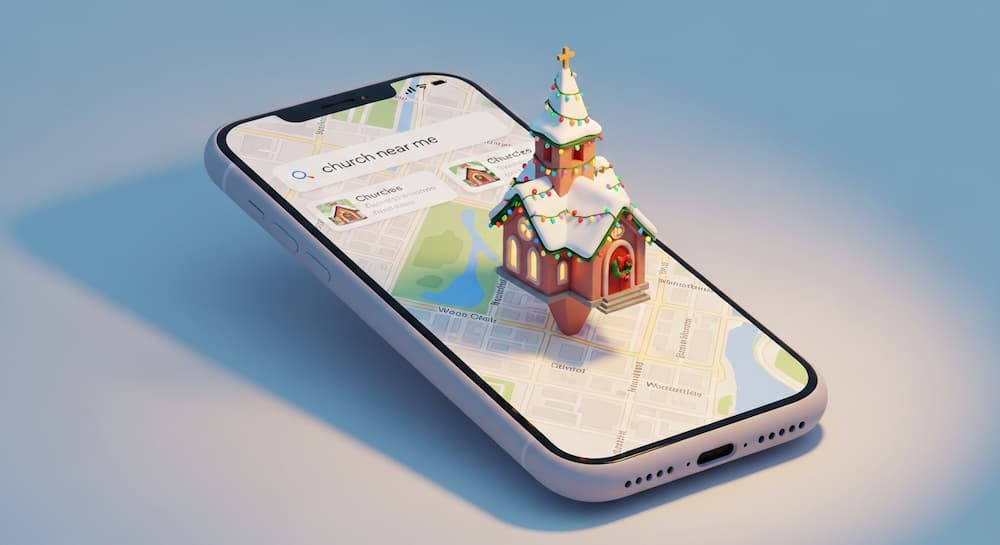Before Recording A Video Interview
Video stories are powerful because they tell and show how God can transform a life. But it isn’t easy to solicit these stories from individuals during an interview. So here are best practices to prepare unseasoned interviewers.

Video storytelling is incredibly powerful for churches to use in services and on online platforms. This is because they tell and show the life changing impact on an individual. These types of personal and intimate stories work best between friends – when the interviewer and interviewee know each other well. Having a friend conduct the interview allows for authenticity and vulnerability. But oftentimes the friend isn’t experienced in the craft of interviewing. Below are seven tips to help train and prepare any unseasoned interviewer. Also, if you want video storytelling coaching then schedule a free consultation session with me. I would love to help you succeed.
1. Retractable Statements
Before you hit record, let your subject know they are allowed to retract any statements they make during the interview. Let them know if they overshare during the interview they can retract it at the end of the interview. If they regret those careless comments about their mother-in-law or that honest and unvarnished opinion about their boss, they can ask it not to be included. This tends to relax anybody on camera. It also adds candor you’ll receive from your subject. But here’s an important note. You are not granting them vetting rights on the final edit. That is a lot of control over the video and I wouldn’t recommend granting it. You are just allowing them to cut any comments before the editing process begins.
2. Enter After Setup
Enter the recording room with the interviewee only after everything has been set up. This keeps the anxiety level down, it keeps the interviewee calm. Setting up a room to record can be a visually dizzying experience. Lights are being put up. Gaffer’s tape is being put down. Furniture is being rearranged. If you’ve never experienced this before, it can be overwhelming. Entering after setup also helps the interviewee keep their mind on their story. Once they see the room being set up they focus on the commotion around them and start to lose focus of their story.
3. Remind Them It’s Not Live
Once the lights are on, the camera is rolling and you start asking questions, the intensity will go up. The interviewee may falsely assume that it is a live moment. Reminding your interviewee that it isn’t live relieves undue pressure. It also gives them freedom for retakes. If they weren’t pleased with their answer, you can ask the question again. This reminder removes the pressure of delivering a “perfect response” on the first attempt. This step is even more important because of the ability to go live on social media platforms. The default was, we are recording now to air later. The default is becoming, we are recording now to air now. So remind people that the interview is not live. It will lower their anxiety and in turn heighten their storytelling.
4. Non Verbal Feedback Only
Let the interviewee know that you will only give non verbal feedback during their answers. If you give them verbal feedback during their answers their mic will pick it up and ruin the recording. Verbal feedback is any of those small words, phrases or even grunts we give somebody to let them know we understand what they’re saying. Anyone with basic communication skills does this naturally. Make sure to only give non verbal feedback like nodding your head in agreement, smiling at a joke or furrowing your brow during difficult news. I usually tell people that I’ll look like a human bobble head during our interview so they know what to expect.
5. Keep Eye Contact
Ask the interviewee to keep eye contact with you during the whole interview. Without this advice the interviewee could easily start giving their answers directly to the camera, the videographer or their friend sitting in the corner. None of these are good eye contact options. If they interviewee starts looking elsewhere during the course of an answer, the experience will feel disjointed for the viewer. I also ask them to keep eye contact even when I look down at my notes. If you don’t then they will naturally look down at your notes as well.
6. Incorporate Questions Into Answers
Ask the interviewee to incorporate your questions into their answers before you start recording. Having the question in the answer gives context for what is being said. It also helps your editor make sense of the story in post production. Sometimes the subject forgets this principle. So you might have to remind them of it over the course of the interview.
7. Develop A Story Pipeline
Developing a pipeline ensures you have additional stories down the road when needed. To do this you need a system to curate stories within your church or organization. One way to gather these stories in a church context is during your Sunday service review. During this time staff and volunteers share stories of life change from Sunday. Make sure to document these stories as you hear them. Another way is through a story page on your website. I’ve seen churches give an invitation to share stories on these pages. Here is an example from Willow. This invitation is another funnel for your story pipeline.
So those were seven tips to help train and prepare any unseasoned interviewer. Send an email to benstapley@gmail.com and let me know what steps I missed. I would love to hear from you and learn from you. And schedule a free consultation session with me if you want video storytelling coaching. I would love to help you succeed. In the end we want to tell powerful stories of redemption and restoration. So hopefully these steps help you tell more of those stories.
Sign Up for Product Updates
Video storytelling is incredibly powerful for churches to use in services and on online platforms. This is because they tell and show the life changing impact on an individual. These types of personal and intimate stories work best between friends – when the interviewer and interviewee know each other well. Having a friend conduct the interview allows for authenticity and vulnerability. But oftentimes the friend isn’t experienced in the craft of interviewing. Below are seven tips to help train and prepare any unseasoned interviewer. Also, if you want video storytelling coaching then schedule a free consultation session with me. I would love to help you succeed.
1. Retractable Statements
Before you hit record, let your subject know they are allowed to retract any statements they make during the interview. Let them know if they overshare during the interview they can retract it at the end of the interview. If they regret those careless comments about their mother-in-law or that honest and unvarnished opinion about their boss, they can ask it not to be included. This tends to relax anybody on camera. It also adds candor you’ll receive from your subject. But here’s an important note. You are not granting them vetting rights on the final edit. That is a lot of control over the video and I wouldn’t recommend granting it. You are just allowing them to cut any comments before the editing process begins.
2. Enter After Setup
Enter the recording room with the interviewee only after everything has been set up. This keeps the anxiety level down, it keeps the interviewee calm. Setting up a room to record can be a visually dizzying experience. Lights are being put up. Gaffer’s tape is being put down. Furniture is being rearranged. If you’ve never experienced this before, it can be overwhelming. Entering after setup also helps the interviewee keep their mind on their story. Once they see the room being set up they focus on the commotion around them and start to lose focus of their story.
3. Remind Them It’s Not Live
Once the lights are on, the camera is rolling and you start asking questions, the intensity will go up. The interviewee may falsely assume that it is a live moment. Reminding your interviewee that it isn’t live relieves undue pressure. It also gives them freedom for retakes. If they weren’t pleased with their answer, you can ask the question again. This reminder removes the pressure of delivering a “perfect response” on the first attempt. This step is even more important because of the ability to go live on social media platforms. The default was, we are recording now to air later. The default is becoming, we are recording now to air now. So remind people that the interview is not live. It will lower their anxiety and in turn heighten their storytelling.
4. Non Verbal Feedback Only
Let the interviewee know that you will only give non verbal feedback during their answers. If you give them verbal feedback during their answers their mic will pick it up and ruin the recording. Verbal feedback is any of those small words, phrases or even grunts we give somebody to let them know we understand what they’re saying. Anyone with basic communication skills does this naturally. Make sure to only give non verbal feedback like nodding your head in agreement, smiling at a joke or furrowing your brow during difficult news. I usually tell people that I’ll look like a human bobble head during our interview so they know what to expect.
5. Keep Eye Contact
Ask the interviewee to keep eye contact with you during the whole interview. Without this advice the interviewee could easily start giving their answers directly to the camera, the videographer or their friend sitting in the corner. None of these are good eye contact options. If they interviewee starts looking elsewhere during the course of an answer, the experience will feel disjointed for the viewer. I also ask them to keep eye contact even when I look down at my notes. If you don’t then they will naturally look down at your notes as well.
6. Incorporate Questions Into Answers
Ask the interviewee to incorporate your questions into their answers before you start recording. Having the question in the answer gives context for what is being said. It also helps your editor make sense of the story in post production. Sometimes the subject forgets this principle. So you might have to remind them of it over the course of the interview.
7. Develop A Story Pipeline
Developing a pipeline ensures you have additional stories down the road when needed. To do this you need a system to curate stories within your church or organization. One way to gather these stories in a church context is during your Sunday service review. During this time staff and volunteers share stories of life change from Sunday. Make sure to document these stories as you hear them. Another way is through a story page on your website. I’ve seen churches give an invitation to share stories on these pages. Here is an example from Willow. This invitation is another funnel for your story pipeline.
So those were seven tips to help train and prepare any unseasoned interviewer. Send an email to benstapley@gmail.com and let me know what steps I missed. I would love to hear from you and learn from you. And schedule a free consultation session with me if you want video storytelling coaching. I would love to help you succeed. In the end we want to tell powerful stories of redemption and restoration. So hopefully these steps help you tell more of those stories.
podcast transcript
Video storytelling is incredibly powerful for churches to use in services and on online platforms. This is because they tell and show the life changing impact on an individual. These types of personal and intimate stories work best between friends – when the interviewer and interviewee know each other well. Having a friend conduct the interview allows for authenticity and vulnerability. But oftentimes the friend isn’t experienced in the craft of interviewing. Below are seven tips to help train and prepare any unseasoned interviewer. Also, if you want video storytelling coaching then schedule a free consultation session with me. I would love to help you succeed.
1. Retractable Statements
Before you hit record, let your subject know they are allowed to retract any statements they make during the interview. Let them know if they overshare during the interview they can retract it at the end of the interview. If they regret those careless comments about their mother-in-law or that honest and unvarnished opinion about their boss, they can ask it not to be included. This tends to relax anybody on camera. It also adds candor you’ll receive from your subject. But here’s an important note. You are not granting them vetting rights on the final edit. That is a lot of control over the video and I wouldn’t recommend granting it. You are just allowing them to cut any comments before the editing process begins.
2. Enter After Setup
Enter the recording room with the interviewee only after everything has been set up. This keeps the anxiety level down, it keeps the interviewee calm. Setting up a room to record can be a visually dizzying experience. Lights are being put up. Gaffer’s tape is being put down. Furniture is being rearranged. If you’ve never experienced this before, it can be overwhelming. Entering after setup also helps the interviewee keep their mind on their story. Once they see the room being set up they focus on the commotion around them and start to lose focus of their story.
3. Remind Them It’s Not Live
Once the lights are on, the camera is rolling and you start asking questions, the intensity will go up. The interviewee may falsely assume that it is a live moment. Reminding your interviewee that it isn’t live relieves undue pressure. It also gives them freedom for retakes. If they weren’t pleased with their answer, you can ask the question again. This reminder removes the pressure of delivering a “perfect response” on the first attempt. This step is even more important because of the ability to go live on social media platforms. The default was, we are recording now to air later. The default is becoming, we are recording now to air now. So remind people that the interview is not live. It will lower their anxiety and in turn heighten their storytelling.
4. Non Verbal Feedback Only
Let the interviewee know that you will only give non verbal feedback during their answers. If you give them verbal feedback during their answers their mic will pick it up and ruin the recording. Verbal feedback is any of those small words, phrases or even grunts we give somebody to let them know we understand what they’re saying. Anyone with basic communication skills does this naturally. Make sure to only give non verbal feedback like nodding your head in agreement, smiling at a joke or furrowing your brow during difficult news. I usually tell people that I’ll look like a human bobble head during our interview so they know what to expect.
5. Keep Eye Contact
Ask the interviewee to keep eye contact with you during the whole interview. Without this advice the interviewee could easily start giving their answers directly to the camera, the videographer or their friend sitting in the corner. None of these are good eye contact options. If they interviewee starts looking elsewhere during the course of an answer, the experience will feel disjointed for the viewer. I also ask them to keep eye contact even when I look down at my notes. If you don’t then they will naturally look down at your notes as well.
6. Incorporate Questions Into Answers
Ask the interviewee to incorporate your questions into their answers before you start recording. Having the question in the answer gives context for what is being said. It also helps your editor make sense of the story in post production. Sometimes the subject forgets this principle. So you might have to remind them of it over the course of the interview.
7. Develop A Story Pipeline
Developing a pipeline ensures you have additional stories down the road when needed. To do this you need a system to curate stories within your church or organization. One way to gather these stories in a church context is during your Sunday service review. During this time staff and volunteers share stories of life change from Sunday. Make sure to document these stories as you hear them. Another way is through a story page on your website. I’ve seen churches give an invitation to share stories on these pages. Here is an example from Willow. This invitation is another funnel for your story pipeline.
So those were seven tips to help train and prepare any unseasoned interviewer. Send an email to benstapley@gmail.com and let me know what steps I missed. I would love to hear from you and learn from you. And schedule a free consultation session with me if you want video storytelling coaching. I would love to help you succeed. In the end we want to tell powerful stories of redemption and restoration. So hopefully these steps help you tell more of those stories.
VIDEO transcript
Video storytelling is incredibly powerful for churches to use in services and on online platforms. This is because they tell and show the life changing impact on an individual. These types of personal and intimate stories work best between friends – when the interviewer and interviewee know each other well. Having a friend conduct the interview allows for authenticity and vulnerability. But oftentimes the friend isn’t experienced in the craft of interviewing. Below are seven tips to help train and prepare any unseasoned interviewer. Also, if you want video storytelling coaching then schedule a free consultation session with me. I would love to help you succeed.
1. Retractable Statements
Before you hit record, let your subject know they are allowed to retract any statements they make during the interview. Let them know if they overshare during the interview they can retract it at the end of the interview. If they regret those careless comments about their mother-in-law or that honest and unvarnished opinion about their boss, they can ask it not to be included. This tends to relax anybody on camera. It also adds candor you’ll receive from your subject. But here’s an important note. You are not granting them vetting rights on the final edit. That is a lot of control over the video and I wouldn’t recommend granting it. You are just allowing them to cut any comments before the editing process begins.
2. Enter After Setup
Enter the recording room with the interviewee only after everything has been set up. This keeps the anxiety level down, it keeps the interviewee calm. Setting up a room to record can be a visually dizzying experience. Lights are being put up. Gaffer’s tape is being put down. Furniture is being rearranged. If you’ve never experienced this before, it can be overwhelming. Entering after setup also helps the interviewee keep their mind on their story. Once they see the room being set up they focus on the commotion around them and start to lose focus of their story.
3. Remind Them It’s Not Live
Once the lights are on, the camera is rolling and you start asking questions, the intensity will go up. The interviewee may falsely assume that it is a live moment. Reminding your interviewee that it isn’t live relieves undue pressure. It also gives them freedom for retakes. If they weren’t pleased with their answer, you can ask the question again. This reminder removes the pressure of delivering a “perfect response” on the first attempt. This step is even more important because of the ability to go live on social media platforms. The default was, we are recording now to air later. The default is becoming, we are recording now to air now. So remind people that the interview is not live. It will lower their anxiety and in turn heighten their storytelling.
4. Non Verbal Feedback Only
Let the interviewee know that you will only give non verbal feedback during their answers. If you give them verbal feedback during their answers their mic will pick it up and ruin the recording. Verbal feedback is any of those small words, phrases or even grunts we give somebody to let them know we understand what they’re saying. Anyone with basic communication skills does this naturally. Make sure to only give non verbal feedback like nodding your head in agreement, smiling at a joke or furrowing your brow during difficult news. I usually tell people that I’ll look like a human bobble head during our interview so they know what to expect.
5. Keep Eye Contact
Ask the interviewee to keep eye contact with you during the whole interview. Without this advice the interviewee could easily start giving their answers directly to the camera, the videographer or their friend sitting in the corner. None of these are good eye contact options. If they interviewee starts looking elsewhere during the course of an answer, the experience will feel disjointed for the viewer. I also ask them to keep eye contact even when I look down at my notes. If you don’t then they will naturally look down at your notes as well.
6. Incorporate Questions Into Answers
Ask the interviewee to incorporate your questions into their answers before you start recording. Having the question in the answer gives context for what is being said. It also helps your editor make sense of the story in post production. Sometimes the subject forgets this principle. So you might have to remind them of it over the course of the interview.
7. Develop A Story Pipeline
Developing a pipeline ensures you have additional stories down the road when needed. To do this you need a system to curate stories within your church or organization. One way to gather these stories in a church context is during your Sunday service review. During this time staff and volunteers share stories of life change from Sunday. Make sure to document these stories as you hear them. Another way is through a story page on your website. I’ve seen churches give an invitation to share stories on these pages. Here is an example from Willow. This invitation is another funnel for your story pipeline.
So those were seven tips to help train and prepare any unseasoned interviewer. Send an email to benstapley@gmail.com and let me know what steps I missed. I would love to hear from you and learn from you. And schedule a free consultation session with me if you want video storytelling coaching. I would love to help you succeed. In the end we want to tell powerful stories of redemption and restoration. So hopefully these steps help you tell more of those stories.



















.jpg)

.jpg)






